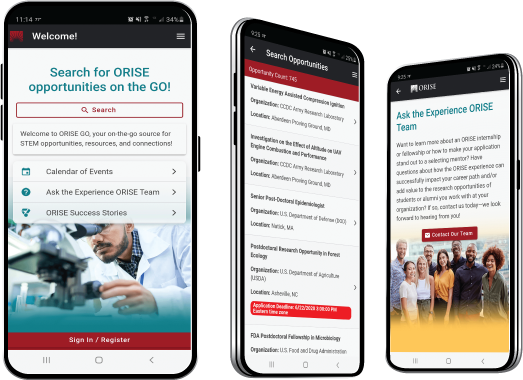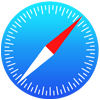Advanced Antenna Technology
A complete application package consists of:
- An application
- A current resume/CV
- Transcript(s) – For this opportunity, an unofficial transcript or copy of academic records printed by the applicant or by academic advisors from internal institution systems may be submitted. Official Transcripts for Junior applicants must be sent to ORAU directly from the academic institution, including graduation date and degree awarded, and must be provided before the fellowship can begin. All transcripts must be in English or include an official English translation.
- Three references
Additional documents to be uploaded must be in PDF format in a standard typeface no smaller than 12-point font, 1” margins, and double-spaced.
- Research Proposal (maximum of 10 pages)
- Dissertation Abstract (maximum of 1 page) not required for Senior applicants
- Summary of Previous and Current Research (maximum of 4 pages)
- List of Publications (maximum of 2 pages)
If you have questions, send an email to AirForceFellowships@orau.org. Please include the reference code for this opportunity in your email.
Research opportunities exist in the area of high-gain and multibeam antennas to support Air Force air- and spaceborne radar systems. We are particularly interested in wideband (>1 octave) and multiband systems, and in developing both new antenna designs and new efficient analysis methods. This applies to directly radiating planar and conformal arrays, as well as array-fed reflector and lens configurations, which offer the potential for an electrically scanned, high-gain beam at low cost.
Other topics of interest include wide-scan wideband planar arrays, arrays for hemispherical coverage, low-profile UHF/VHF arrays on conformal platforms, planar and conformal frequency selective surfaces, efficient electrically small antennas, and applications of metamaterials in novel antenna and lens designs.
A final topic centers on computational electromagnetics for electrically large bodies. We need to improve both frequency and time domain methods, which eventually will permit us to numerically analyze large finite planar and conformal arrays, including mutual coupling and edge effects on large complex platforms, possibly of exotic nonconducting materials including metamaterials.
References
Josefsson L, Persson P: Conformal Array Antenna Theory and Design. Hoboken: John Wiley and Sons, 2006
Bhattacharyya AK: Phased Array Antennas. Hoboken: John Wiley and Sons, 2006
Research Advisor
Prospective applicants are encouraged to contact the opportunity’s Research Advisor, listed below, to discuss the applicant’s approach for responding to this research opportunity and to discuss their potential collaboration on the research opportunity.
Dr. Boris Tomasic, boris.tomasic@us.af.mil, (937) 713-8962
Candidates must have a Ph.D., Sc.D., M.D., D.V.M., or academically equivalent research doctorate before beginning the fellowship.
Candidates must have U.S. citizenship. Research opportunities at AFRL, AFIT, and USAFA are open to U.S. citizens only. Qualified applicants will receive consideration without regard to race, creed, color, age, sex, or national origin.
Stipend rates are determined by Air Force officials, and are based on the applicant’s academic and professional background. The fellow must show proof of health and medical insurance. Health insurance can be obtained through ORAU. The fellow will not enter into an employee/employer relationship with ORAU, USAF, or any other facility, office or agency. Instead, the participant will be affiliated with ORAU for the administration of the appointment through the ORAU appointment letter and Terms of Appointment.
For more information, please visit the Air Force STFP website at https://AirForceFellowships.orau.org.
- Citizenship: U.S. Citizen Only
- Degree: Doctoral Degree.
-
Discipline(s):
- Chemistry and Materials Sciences (12 )
- Computer, Information, and Data Sciences (16 )
- Earth and Geosciences (21 )
- Engineering (27 )
- Environmental and Marine Sciences (12 )
- Life Health and Medical Sciences (45 )
- Mathematics and Statistics (10 )
- Other Non-Science & Engineering (2 )
- Physics (16 )
- Science & Engineering-related (1 )
- Social and Behavioral Sciences (18 )

 ORISE GO
ORISE GO

The ORISE GO mobile app helps you stay engaged, connected and informed during your ORISE experience – from application, to offer, through your appointment and even as an ORISE alum!





